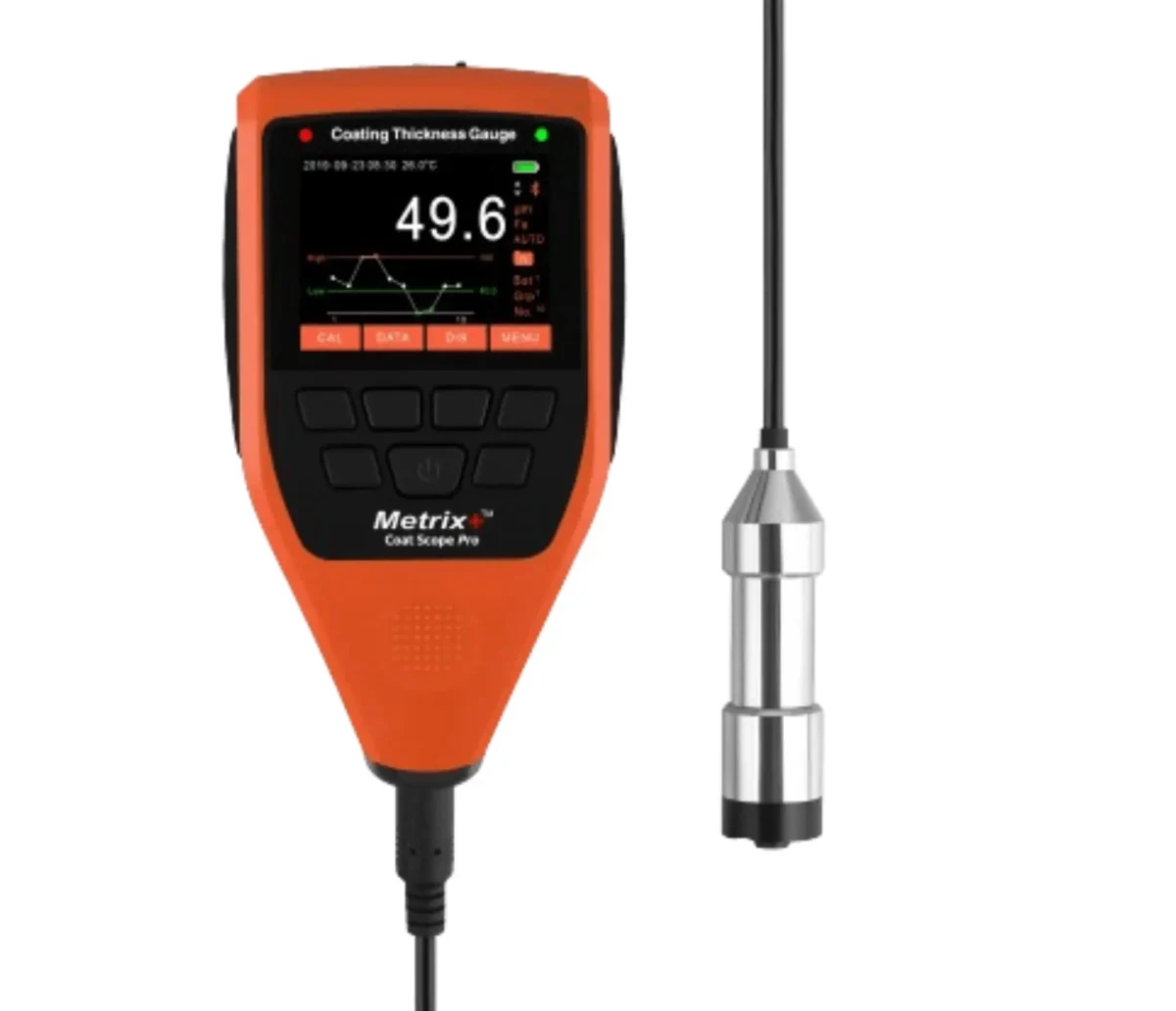
Coating Thickness Gauge
A Coating Thickness Gauge is a testing instrument that is used to measure the thickness of a coating that has been connected to a surface. It is also known as a paint meter. To choose a coating thickness gauge, we have to know the substrate first. Coating Thickness Gauge estimation could be a principle component in fabricating, particularly for items that depend on dependable coatings for execution or strength. Coating must be connected to correct determinations assigned by the end-users of the item. Deciding the thickness of a coating is critical since it impacts the general product’s life span, execution, and physical appearance.
Defend Your Products from Corrosion
Advanced Corrosion Salt Spray Chamber for rigorous testing, ensuring durability in harsh environments
Ferrous and nonferrous coating thickness gauges
are useful for precise measurement of non-conductive coating thickness on magnetic and non-magnetic substrates. Iron is used for coating magnetic material and non-magnetic material. On metallic and non-metallic materials coatings of paint, enamel, rubber, and plastic are applied. A Paint thickness gauge (paint meter) measures the overall film construct (thickness) of all car paint layers on metal vehicle boards. (Zinc phosphate, primer, base coat color,)are involved in automotive paint layers. Powder thickness gauge provides simple, fast, and accurate coating thickness measurement on smooth and thin industrial paint and powder coatings. Powder coatings producers prescribe target film thickness ranges to realize excellent execution characteristics.
Coating thickness guage Working Principle
The working principles for coating thickness gauge are the Magnetic Induction, Eddy Current, and Ultrasonic Principle.
- Magnetic Induction: In this method a magnetic field is used for measuring the thickness of non-magnetic coatings. A magnetic field is generated by the gauge that interacts with the coating. By observing the magnetic field changes, the thickness of the coatings is calculated.
2. Eddy Current: The thickness of non-conductive coatings applied to conductive surfaces can be measured by using this method. The conductive substrate gets Eddy currents as a result of the gauges alternating current generation. Afterwards, the coating interacts with these Eddy currents and the gauge measures the coating thickness.
- Power Supply: 4 x1.5 AAA (UM-4) battery
- Display: 4 digits, 10 mm LCD
- Resolution: 0.1 microns (0~99.9 um)
- Accuracy: ±1~3%n or 2.5 um or 0.1 mil (Whichever is the greater)
- Range : 0~1250 um/0~50 mil
- Auto-Hold reading on the display
- Based on Eddy current measurement method
- Thickness Range : 0-1250 micro metre
- Accuracy : ±2.5 micro metre
- Flexible lead Measuring Probes set of 5 Calibration Foils and Zero Disks.
Know About Our Products
Effective Lab India is a trusted manufacturer of high-precision digital coating thickness gauges, catering to a wide range of industries across India. With a commitment to quality and innovation, our advanced gauges ensure accurate measurements of coating thickness, enhancing efficiency and reliability for industrial applications.
Make sure the gauge is calibrated and then place the probe on the coated surface and take the reading.
The thickness of the coating applied to the surface is measured by a coating thickness gauge.
Coating thickness can be measured by using several methods such as Eddy current or magnetic induction.
Coating thickness measures the thickness of coatings or paint layers.



Contact Form
Connect with us will help you with their queries...
For accurate laboratory testing results? contact us
for high-quality testing equipment solutions.
